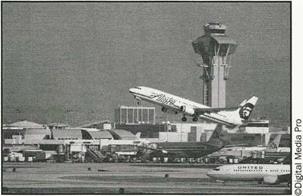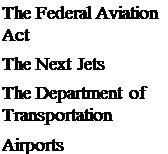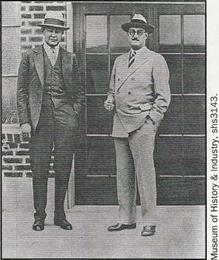The Evolution of the Air-Cooled Engine
It was generally believed that no air-cooled type of engine could ever supplant the exceedingly efficient water-cooled engines that had been developed both in the automotive and aircraft industries. The ability to operate large displacement engines at high crankshaft speeds was central to this efficiency, and air-cooled engines could not match those crankshaft speeds. Cooling was a big problem. It was also believed that the excessive “head resistance” of radial engines would not compete with in-line water – cooled engines, generating excessive drag. Yet, if they could be made to work, air-cooled engines offered many advantages over liquid-cooled engines, with their associated requirements of plumbing, radiators, and attendant weight. Hardly anyone believed that the radial would work, except Fred Rentschler, and perhaps Charles Lawrance. The Curtiss Aeronautical and Packard factories were firmly committed to liquid-cooled engines.
Lawrance Aero Engine Company was experimenting with a small, З-cylinder French radial in Lawrance’s New York City loft, but it was underfunded and disorganized and it was not making much headway. Lawrance and his backers approached Wright Aeronautical for talks, and Rentschler was assigned to confer with them. The Lawrance group said that the Navy was interested in the air-cooled engine and would contract for a properly developed radial that could be produced in sufficient numbers. This was soon confirmed by the head of the Bureau of Aeronautics, Admiral Moffet, who asked Rentschler to come down to Washington to talk about the Lawrance situation. As a result of this discussion, Wright Aeronautical took over the Lawrance operation and moved it to New Jersey in 1923.
The engine at the time was known as the J-l radial, but the Lawrance group lacked the funds and technical expertise to bring its power up to military standards. Within several months, the Wright engineers had redesigned the engine into a workable product, and they continued to improve the design, reliability, cooling, and fuel consumption. The engine design would ultimately be known as the “Whirlwind,” a 200-horsepower, 790-inch displacement radial designated the J-5 or R-790, and it was introduced in 1925. The Navy bought it and used it, mostly in trainers. It made an unheard-of endurance flight of over 50 hours in April 1927 and it was selected by Charles Lindbergh for his transatlantic flight from New York to Paris in May 1927.
But Rentschler would not be there at the end. In the summer of 1924 it became apparent that the board of directors of Wright
Aeronautical, which was composed of investment bankers who had no appreciation for what Rentschler was trying to accomplish, was going to make the arduous effort of creating a competitive radial engine very difficult, if not impossible.
The Whirlwind was a fine machine, but Rentschler was convinced that the radial engine concept could be much more powerful and much more efficient, and that it could compete with the 400- and 500-horsepower liquid-cooled engines on which the military relied. But development would take more time and much more money, and the Wright board of directors was not interested in such costly projects.
Rentschler had decided to leave the company. He was discouraged and he had taken ill. He resigned and was determined to give it all up. But on recovering his health at the beginning of 1925, he set out to find a way to continue his quest in radial aviation engines. Although he had little money, he did have hometown contacts, and his brother, Gordon, was a vice-president of National City Bank of New York. Gordon had also been recently elected to the board of directors of Niles-Bement-Pond, a Hamilton company well known to both Gordon and Fred. Colonel Deeds was also on the Niles Board, and Niles owned Pratt & Whitney Tool Company. Pratt & Whitney was sitting on piles of cash from World War I operations.
Rentschler went down to Washington for a confidential talk with Admiral Moffet, and to seek some insight as to how the Navy might view his move from Wright Aeronautical. The discussions went extremely well; the admiral told him that the Navy would be “overwhelmingly” interested if such a powerful radial could be produced.[8]
Rentschler’s next stop was an all-day appointment with the president of Niles-Bement – Pond in New York City, James K. Cullen, who was a close friend of Rentschler’s father in Hamilton. Rentschler told Cullen that he estimated he would need $500,000 through the design, construction, preliminary tests, and proof of the new
|
FIGURE 11-2 Rentschler & WM. Boeing. |
engine. If the engine proved reliable, he would need up to another one million dollars before any return could be expected. Cullen didn’t blink; instead he said he would provide the money from “surplus funds.” It got better. Cullen said there was empty space at the Pratt & Whitney plant in East Hartford and that Rentschler could have it for his use—he could also use the P&W name!
Contract arrangements were completed on July 14, 1925, with Rentschler taking 50 percent of the stock of the new company, which was to be called Pratt & Whitney Aircraft Company, and Pratt & Whitney Tool Company taking the other 50 percent. The core engineering group from Wright Aeronautical, George Mead, Don Brown, and Andrew Willagoos, committed to joining him. They roughed out the general characteristics of the proposed new engine, including displacement, power range, and a weight limitation. They included innovations never before used, either in the United States or in Europe.
Wasting no time, the group set up shop and went to work in the Willagoos garage in Montclair, New Jersey, while the move to Hartford was arranged. The goal was understood by all: an air-cooled radial in the 400-horsepower class. By August the plant was operating in Hartford, and by Christmas Day 1925, the new engine had been completely designed, machined, and assembled. Within a few hours on the test stand, power readings showed well above 400 horsepower. It weighed 650 pounds. It was proving to be a thoroughbred.
Navy personnel were swept off their feet. By October 1926, the Navy sent a contract for 200 of the engines and Pratt and Whitney Aircraft was on its way. Due to the sound it made, the group decided on “Bees” as a general designation for the P&W engine types. Rentschler’s wife suggested that the first engine type be called the “Wasp.” And so it was.
There was still the question of “head resistance”; Packard and Curtiss maintained that the radial could never match their engines in speed, even though their engines were heavier. Rentschler believed that, if properly cowled, the radial could be cooled at high speed. Nine out of ten “experts” disagreed. In side-by-side tests, however, the Wasp held a slight edge in speed over the Curtiss D-12, and the Wasp out climbed and turned inside its competitor. The installed weight differential between the Wasp and the Liberty was 1,000 pounds, and between the Wasp and the D-12, 650 to 700 pounds. These figures translated into useful load for a Wasp-driven airplane.
The P&W engineers continued to design and test, and soon they had developed the 500-horsepower “Hornet,” which the Navy liked as well. By 1927, when the first large aircraft carriers, the Lexington and the Saratoga, were launched, all 160 airplanes on deck had either Wasp or Hornet engines. It took the Army two years to come around to the Wasp and Hornet for their fighters. For the rest of the decade, P&W engines set the standard. By 1929, 2,500 Wasps had been delivered, and the engine was to remain in production until 1960. When the last Wasp was turned out, the production run numbered 34,966.
But the company was soon in for some competition. After the departure of Rentschler and his engineers from Wright Aeronautical, the company regrouped. By 1929, Wright Aeronautical had perfected the 575-horsepower air-cooled Cyclone that was to see extensive use in the coming years in both civilian and military aircraft, installed in the DC-3 and B-17. Wright Aeronautical, ironically because of the long-standing enmity between the Wright brothers and Glenn Curtiss, merged with Curtiss Aircraft on July 5, 1929 and operates under the name Curtiss-Wright to this day.
The development of the heavy radial engine in 1925 and 1926 transformed the aviation industry, leading to the privatization of airmail, the building of larger aircraft, the creation of the first safe passenger airlines, and creating a rehable, lighter – weight engine. It would lead to the first transcontinental airline, composed of Boeing and P&W, and to the merging of P&W with Chance Vought Aircraft, Hamilton Standard, and Sikorsky. We will get more into those details in the next chapters.
Because of these developments, the role of government was just beginning to define itself in the new world of commercial aviation. [9] 1

Regulation
|
Chapter 15 |
State of the Airlines before the Civil Aeronautics Act |
|
Chapter 16 |
The Civil Aeronautics Act of 1938 (McCarran-Lea Act) |
|
Chapter 17 |
World War II |
|
Chapter 18 |
A New Beginning |
|
Chapter 19 |
On the Way to the Jet Age |

Chapter 12 The Privatization of Airmail
Chapter 13 The Founding of the Airlines
Chapter 14 New Deal—The

 Roosevelt Administration
Roosevelt Administration











